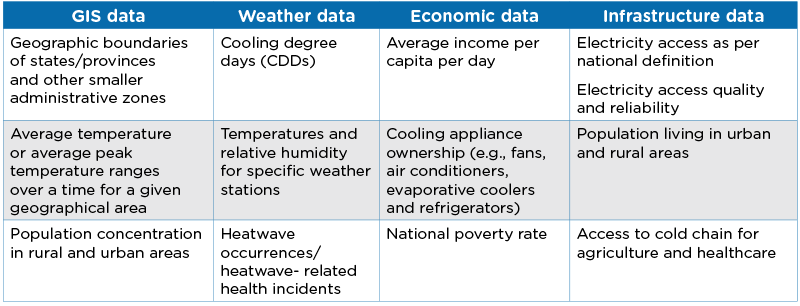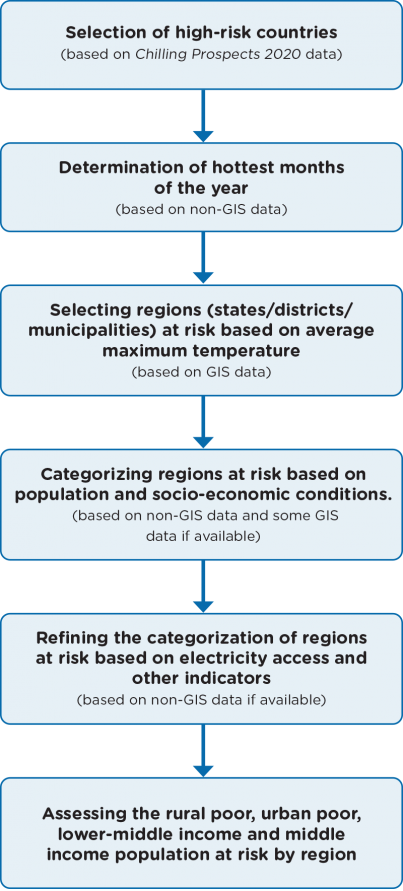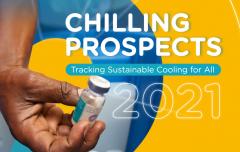Sub-national cooling risks
|
Sub-national, location-specific analysis can identify populations that face cooling access challenges due to local weather, socio-economic and infrastructure conditions that may not be apparent due to higher incomes and reliable electrification at the country level. Sub-national cooling risk assessments are important to identify and close cooling access gaps and ensure that no one is left behind. |
Chilling Prospects 2020 introduced a methodology to assess the global populations that are at risk due to lack of cooling access at sub-national level, recognizing that cooling risks vary within large countries due to differences in population, climate and socioeconomic conditions. Sub-national level data can help identify regions of a country that face greater risks than other regions.
The objective of identifying cooling risks at sub-national level is to inform and encourage policymakers to address access to cooling for populations at the highest risk. Undertaking such an exercise reduces the risk of overlooking factors that can be detrimental to people’s health, productivity and quality of life. By conducting a sub-national risk assessment due to lack of access to cooling, localized plans can be developed to improve access to cooling and limited local resources can be prioritized. Sub-national access to cooling issues identified can then be accounted for in national cooling plans, especially in countries that have large economic disparities or where sub-national governments enjoy greater implementation effectiveness.
The methodology introduced in Chilling Prospects 2020 formulated a case study for India and evaluated sub-national data for average maximum temperatures, cooling degree days (CDDs), income levels and cooling appliance ownership for determining risks [1] for populations living in different states. The India case study identified 14 states to be at high risk, nine states at medium risk and seven states at low risk. It showed that risk levels for a country with large geographical and socioeconomic diversity can be attributed to local conditions.
The India case study also found that certain indicators for assessing cooling risk may not accurately reflect the comparative risks between different geographic locations. For instance, CDDs alone may not be an effective indicator; Tamil Nadu had 3,045 CDDs making it on average hotter than Andhra Pradesh that had 1,527 CDDs, but as the latter reached higher peak temperatures of 45°C, its population living in higher temperatures without access to cooling is at higher risk.
Similarly, socioeconomic or other local conditions can also change the risk levels at the sub-national level for those without access to cooling.
Case studies
India: Examining populations with lack of access to cooling at district level in Indian states (PDF)
Mexico: Understanding the sub-national cooling risks of a non-high-impact country (PDF)
Pakistan: Assessing sub-national levels at risk due to lack of access to cooling (PDF)








